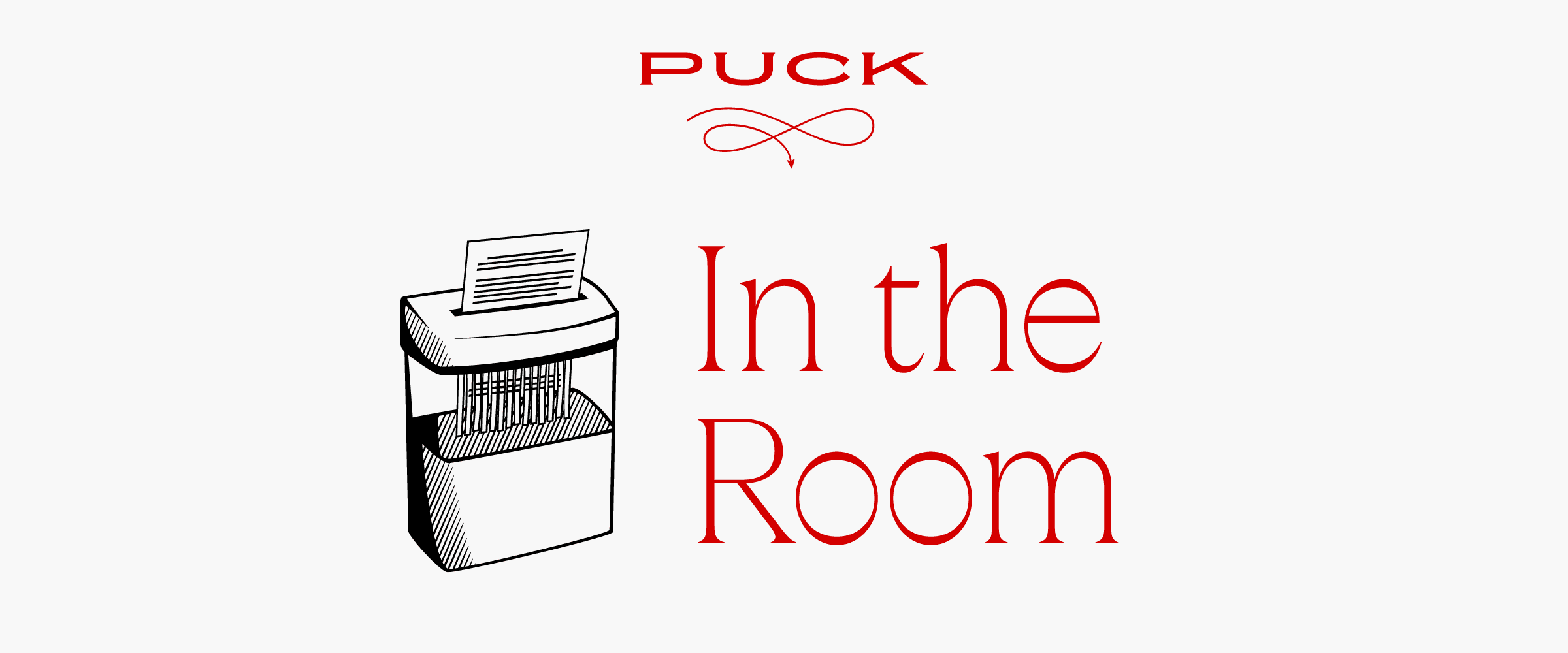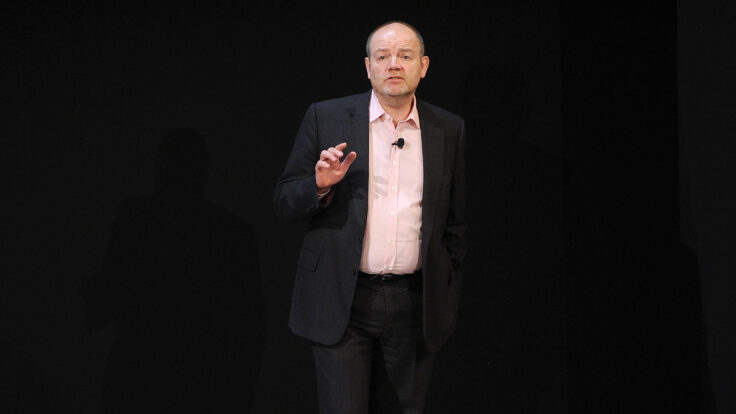 |
|
Greetings from Los Angeles, and welcome back to In the Room. In tonight’s email, the real story behind Sally Buzbee’s abrupt defenestration from The Washington Post, with fresh reporting on the catalyst for her ouster, the eleventh-hour scramble to hire Matt Murray, and the inevitable contretemps that ensued between Will Lewis and his staff on Monday morning. Plus, what all this portends for the Post and the industry going forward.
But first…
🤝 Skydance-Paramount watch: As anticipated, David Ellison’s Paramount acquisition is being slow-walked by Shari Redstone. My partner Bill Cohan reports that Shari appears “afraid of anticipated shareholder litigation—and, in particular, having to return to shareholders, through subsequent litigation in Delaware court, the financial premium that she has fought so hard to win from Ellison/RedBird.” In particular, Shari is looking for a majority of the non-Redstone A shareholders to ratify the deal—and therefore confer some legal cover upon her when the lawsuits emerge. Will this issue end up forcing Gerry Cardinale and David Ellison to walk?
📝 The Daily Beast’s new chief: Ben Sherwood and Joanna Coles have finally selected their new editor-in-chief for The Daily Beast, the person who will actually run the newsroom while Coles goes about the business of being its creative officer and public face. Hugh Dougherty, a deputy editor at the New York Post, will take over from Tracy Connor. (So that’s yet another Brit running an American newsroom—or a Scot, more precisely.) Unsurprisingly, Sherwood heaped a ton of praise on Dougherty in a memo announcing his appointment, though this hardly seems like a transformational hire. Of course, it’s still early days.
Now, my new reporting on the surprising backstory behind the Washington Post’s major executive shakeup…
|
 |
| ‘Post’ Mortem |
| The real and surprising story behind Sally Buzbee’s departure from The Washington Post. |
|
|
|
| In late May, just one day after Washington Post publisher and C.E.O. Will Lewis unveiled his business plan to reverse the company’s years-long slide into financial disrepair, the paper’s well-liked executive editor Sally Buzbee arrived at the company’s headquarters on K Street with a surprise. After weeks of collaborating on a secret restructuring plan that would pull all of the Post’s lifestyle content into a new, experimental newsroom that she would oversee, Buzbee told Lewis that she no longer believed in the strategy. The news shocked Lewis and, later, Post owner Jeff Bezos, both of whom had pitched Buzbee—successfully, they thought—on transitioning to this new role.
Of course, there were a couple things going on here. Bezos and Lewis genuinely saw this new unit as a path for the Post to potentially expand its audience and return to profitability after years of staggering losses. But this was obviously a demotion for Buzbee, whose remit would be essentially halved and whose relevance inside the building would undoubtedly wane. The plan also had the added benefit of clearing the way for a new editorial leader to oversee the Post’s core newsroom. Lewis’s long-standing plan was to appoint Rob Winnett, his soft-spoken but fearless colleague from The Telegraph, in this position; keep David Shipley as head of opinion; and move Buzbee to the new role overseeing the so-called “third newsroom.” Lewis had begun pitching his friend Winnett on a Post job months ago.
The proposed restructuring also affirmed a deeper truth about Buzbee’s position at the Post. A veteran of the Associated Press, she had long been seen as a likable but uninspiring newsroom leader who lacked the talents and gravitas of her predecessor, Marty Baron. Great editors find a way to imbue their media companies with urgency, relevance, and a personality. Under Buzbee, however, the Post quickly became, well, more like the AP.
During the first year of her tenure, beginning in mid-2021, the Post slipped into a malaise. Back then, however, it was easy to pin much of the mess on C.E.O. Fred Ryan, Lewis’s predecessor, who had neglected to chart a strategic vision for the business beyond the go-go Trump years. But while Ryan ran up nine-figure losses and united the newsroom against him, Buzbee failed to retain or lure top talent, and drained the editorial product of its swagger.
Failure is an orphan, but the staggering 50 percent audience decline over the course of her tenure could not simply be blamed on Ryan and the somnolent Biden era. Indeed, as I reported during the Post C.E.O. search last year, both Bezos and his longtime lieutenant Patty Stonesifer, the post-Ryan interim publisher, had privately intimated that Buzbee’s future was an open question—or, at least, that her fate was in the hands of the soon-to-be-hired publisher and C.E.O.
|
|
|
| From his first day on the job, Lewis professed support for Buzbee, but it’s fair to say that she never fit his ideal vision of a newsroom leader. After all, Lewis was a Fleet Street veteran who championed an unapologetically aggressive, buzzy, and high-impact journalism; his claim to fame was leading a Telegraph investigation into a U.K. parliamentary scandal that forced the Speaker of the House of Commons and six ministers to resign. Buzbee’s Post had landed some notable scoops over the years, sure, but it had also been pretty aimless: a lot of indistinct, wire-style copy and time-consuming investigations that may have checked the box for the Pulitzer committee, but didn’t really move the audience needle or capture the public’s imagination. To wit: On Sunday, the Post published a nine-page investigation into the abuse of Native American children at government-run boarding schools more than a century ago. The project, which took a team of journalists nearly a year to complete, is a triumph of award-worthy journalistic rigor; it’s also a scream in a canyon.
Many executive editors would have seen the “third newsroom” demotion for what it was and, in the language of Fleet Street, told Lewis to bugger off. Buzbee, however, appeared to take the concept seriously. For weeks, she had expressed a strong interest in this move to Lewis and was involved in crafting the strategy. She wrote memos and attended multiple offsite meetings to workshop the details. Buzbee also seemed intrigued by the opportunity to more effectively franchise and monetize the lifestyle verticals that she’d championed while executive editor, such Well+Being and Recipes. And then, one day in late May, she changed her mind.
How to explain Buzbee’s volte-face? She was undoubtedly miffed by Lewis’s attempt to replace her with one of his former Telegraph colleagues. She may have also privately disagreed with his three-pronged newsroom strategy, even if she’d initially appeared to endorse it. An AP lifer, she may have also genuinely lacked the street smarts to immediately realize that she was being publicly layered. On Wednesday, the Times floated the idea that Lewis and Buzbee had endured a falling out, weeks earlier, over her decision to publish a story that acknowledged his adjacency to the News Corp. phone-hacking scandal—a move that apparently pissed off Lewis, but was likely irrelevant to her change of heart. (If anything, it actually seems like an attempt by Buzbee loyalists to get ahead of this story.) Whatever the case, on the day after Lewis’s town hall, she called an eleventh-hour audible and informed him that she wanted to keep her current job overseeing the main newsroom.
That wasn’t an option, of course, and Buzbee’s surprise reversal sent Lewis scrambling. Within days, he called Matt Murray, another former colleague whom Lewis had appointed editor-in-chief of The Wall Street Journal, in 2018, during his tenure as its C.E.O. Lewis invited Murray to come down to Washington and, after a week of meetings, convinced him to take a temporary job as the Post’s executive editor until Winnett, who is finishing out his contract as deputy editor at The Telegraph, arrives later this year. At that point, they agreed, Murray would take over the “third newsroom” position that Lewis had originally intended to bequeath to Buzbee. Both Bezos and Stonesifer worked with Lewis on the plan. Indeed, Lewis and Stonesifer met for lunch at her house last week, just a day or two before Lewis asked Buzbee to resign.
|
| The Post-Sugarcoating Era |
|
| At 8:40 p.m. on Sunday, Lewis sent a surprise memo to staff announcing that Buzbee would be stepping down. The irregular timing, which was due to the fact that the news had leaked, set off a wave of panic and confusion across much of the organization. And, admittedly, it was a lot to take in: Buzbee was leaving immediately; Murray, a former Journal editor, was taking her place; Winnett, yet another editor from Lewis’s Fleet Street circle, would replace Murray in several months’ time; and the newsroom was being split into two distinct units—all in the midst of a hyper-chaotic news cycle and just five months out from an historic presidential election.
It was decidedly inelegant. Moreover, what would this amorphous “service and social media journalism” enterprise look like? Why did it need its own editor and its own P&L? And how would Murray, a Journal lifer, envision this thing? How would it affect the Post’s storied reputation?
At an all-hands meeting the next morning, ostensibly intended to introduce the newsroom to Murray, Lewis instead took a considerable amount of heat from staffers like Ashley Parker, Carol Leonnig, and Caroline Kitchener over his handling of the transition. Perhaps unaware that Lewis had tried to keep Buzbee on board in a diminished capacity, they pressed him about the optics of two more middle-aged men replacing a woman. They also chewed him out regarding the lack of diversity at the top of the new masthead and, most notably, suggested that his changes signaled both an underlying criticism of the editorial product he’d inherited and an attempt to transform it into something altogether different. “You’ve chosen people—almost, it seems, intentionally—that have a very different culture from the Washington Post,” Leonnig said.
Alas, of course, that was the point. In the six-plus months leading up to this meeting, Lewis had carefully adhered to a few obvious rules of leadership etiquette: championing his staff, making them feel heard and appreciated—indeed, his initial say it, fix it, build it, scale it plan was conceived with the intent of giving the staff a sense of ownership over their future. Most importantly, he had told everyone that the Post’s journalism wasn’t the problem; the Post was filled with great journalism, he said, it just needed to do a better job delivering it to more readers. In short, he’d said all the things you’re supposed to say before you make the unpleasant decisions that you need to make.
Lewis was considerably less filtered at Monday’s meeting, and even seemed to betray an impatience with colleagues who did not fully appreciate the scope of the challenges facing their business or the level of change required to make it viable. As Lewis had clarified two weeks earlier, the Post has hemorrhaged half—half!—of its audience in recent years. Last year, it lost $77 million. So, yes, of course he had “intentionally” chosen people with a very different culture from the Post, because the Post is in need of a very different editorial and business strategy. And what he seemed to be hearing from these staffers was that, even if they recognized the need for change, they didn’t really want it.
“Let’s not sugarcoat it,” Lewis told Leonnig. “[This thing] needs turning around. We are losing large amounts of money. Your audience has halved in recent years. People are not reading your stuff, right? I can’t sugarcoat it anymore. So I’ve had to take decisive, urgent action to set us on a different path, sourcing talent that I have worked with that are the best of the best.”
|
|
|
| To be fair, some of the Post staffers’ anxiety stems from a lack of clarity around what this new strategy will actually entail, and whether or not it will succeed. After the meeting, Leonnig tweeted that she and her colleagues “understand the need for decisive action” and “genuinely” want to take part in “a successful business model,” a statement suggesting that she had yet to be convinced this was it. Meanwhile, many media observers seemed genuinely confused as to exactly what Lewis was trying to turn the Post into with this “third newsroom”: Was it Buzzfeed? Was it Tronc?
Actually, it seems pretty straightforward. Lewis is quite plainly executing the Mark Thompson-era Times playbook—the very playbook, in fact, that Thompson is trying to reiterate now at CNN. The most notable difference, however, is that by neutering the executive editor position, and slicing the newsroom in half, he has firmly established his oversight of both the creative and editorial aspects of the business. At a place like the Times, the C.E.O. effectively runs only half the business. At the Post, Lewis now appears to have all the power. It’s his way or the highway.
Meanwhile, while Lewis is admirably self-assured and rightly eager to get on with his strategy, his C.V. raises some questions about his time in the salt mines of digital transformation. His tenure at Dow Jones was, in many ways, an unqualified success. But in 2009, as editor-in-chief of The Telegraph, he spearheaded a remarkably similar-sounding effort called the Euston Project, a stand-alone unit aimed at reaching untapped audiences (mostly on iPads) and creating new revenue streams. The project shuttered after Lewis left The Telegraph six months later. In 2022, a couple years after leaving the Journal, Lewis launched a startup called The News Movement, a social video company targeting Gen Z that, in retrospect, was probably just a way station on the path to his current gig.
At the same time, Lewis should at least be commended for, to quote his own lexicon, saying it and fixing it. Indeed, his first six months on the job have essentially focused on battling a three-headed business challenge: cleaning up the Ryan mess, profoundly reimagining the editorial product, and now, it seems, combatting a culture that has historically been too myopic to recognize its challenges.
Raise the sorry state of the Post’s business with your average reporter pal there, and they’ll likely be quick to point out that the Post won three Pulitzers last year, or that the paper frequently scoops the Times on White House stories. They seem less preoccupied with the fact more people read about those scoops in the Times anyway, because the Times has built a profitable and sustainable business buoyed by 10 million loyal digital subscribers who engage with the Times app multiple times a day, rather than once a month.
But perhaps the most significant misread within the Post newsroom was the fantasy that their owner, the world’s second-richest man, was content to watch his media treasure accumulate eight-figure-plus losses year after year. Lewis’s plan may still require some penciling in, but he’s got plenty of room to operate and the support of his 204 billion-dollar man. It’s his Post now, and if his plan doesn’t work he’ll have no one else to blame.
|
|
|
|
| FOUR STORIES WE’RE TALKING ABOUT |
 |
| A Netflix Stunner |
| Digging into Netflix’s mysterious eleventh-hour settlement. |
| ERIQ GARDNER |
|
 |
|
 |
|
 |
|
|
|

|
 |
|
|
|
Need help? Review our FAQs
page or contact
us for assistance. For brand partnerships, email ads@puck.news.
|
|
You received this email because you signed up to receive emails from Puck, or as part of your Puck account associated with . To stop receiving this newsletter and/or manage all your email preferences, click here.
|
|
Puck is published by Heat Media LLC. 227 W 17th St New York, NY 10011.
|
|
|
|







